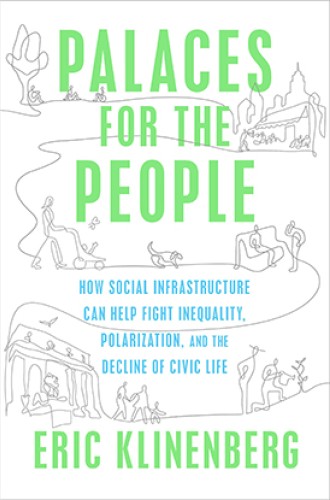Can libraries save us?
What holds the world together, Eric Klinenberg believes, is social infrastructure.
Andrew Carnegie—no angel when it came to industrial relations, but dollar for dollar the greatest philanthropist in modern history—built 2,811 lending libraries, two-thirds of them in the United States, and called them Palaces for the People. Today, when most people glean their information from the Internet, it may seem a quaint gesture. Not to Eric Klinenberg. He regards the library as the epitome of the social infrastructure that is crucial to the survival of Western society.
Klinenberg is one of a generation of sociologists for whom Jane Jacobs’s The Death and Life of Great American Cities constitutes the Old Testament and Robert Putnam’s Bowling Alone the New. His gospel is social infrastructure. What holds society together is contact and conversation. These, when frequent, and when coinciding with shared interests and passions, create common humanity.
Gone are the factories and industrial towns that forged blue-collar communities from diverse ethnic groups. Gone are the athletic contests that transcended class. Now we have cable news and radio talk shows that foster social bonding but jeopardize social bridging—and thus deepen polarization. Besides the library, the temples of Klinenberg’s faith are the barbershop, the gymnasium, the well-groomed park and playground, and the communal lounge with free Wi-Fi.






